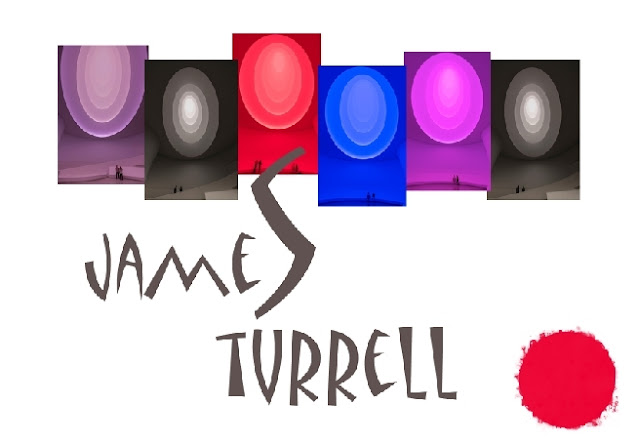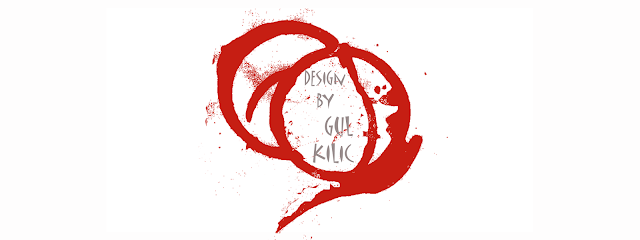A
JAMES TURRELL AT SOLOMON R. GUGGENHEIM MUSEUM NEW YORK
June 21, 2013 – September 25, 2013
JAMES TURRELL AT SOLOMON R. GUGGENHEIM MUSEUM – NEW
YORK
June 21, 2013 - September 25, 2013
The Guggenheim Museum presents James Turrell, the
eminent American artist’s first solo exhibition in a New York museum since
1980. The exhibition features a major new site-specific work, Aten Reign (2013),
which represents one of the most dramatic transformations of the museum ever
conceived—reimagining the rotunda of Frank Lloyd Wright’s iconic building as
one of Turrell’s luminous and immersive Skyspaces. Opening on the summer
solstice, the installation will fill the museum’s central void with shifting
natural and artificial light and intense, modulating color, creating a dynamic
perceptual experience that exposes the materiality of light. Including select
early works in addition to the monumental new installation, James Turrell
considers the dominant themes explored by the artist for nearly fifty years,
focusing on his investigations of perception, light, color, and space and the
critical role of site-specificity in his practice.
James Turrell is one of three concurrent,
independently curated presentations of the artist’s work in summer 2013.
Together, the exhibitions at the Solomon R. Guggenheim Museum, New York, the
Museum of Fine Arts, Houston, and the Los Angeles County Museum of Art
celebrate Turrell's groundbreaking career and form a three-part retrospective
across the country.
James Turrell is curated by Carmen Giménez, Stephen
and Nan Swid Curator of Twentieth-Century Art, Solomon R. Guggenheim Museum,
and Nat Trotman, Associate Curator, Solomon R. Guggenheim Museum.
James Turrell is organized by the Solomon R.
Guggenheim Foundation, New York, in conjunction with the Los Angeles County
Museum of Art and the Museum of Fine Arts, Houston.
The Leadership Committee for James Turrell is gratefully
acknowledged for its generous support, including Lisa and Richard Baker, Pace
Gallery, Almine Rech Gallery, Fundación Almine y Bernard Ruiz-Picasso para el
Arte, 425 Park Avenue/Simone and David W. Levinson, and those who wish to
remain anonymous.
EXHIBITION
OVERVIEW
Since
the late 1960’s Turrell has conceived a wide-ranging yet unified body of work
that explores his specific aesthetic concerns: the use of light as a material
that affects the medium of perception; a refined formal language based in
geometry; an interest in the optical and emotional effects of color; an
interplay between the solid and the ethereal; and an emphasis on quiet, almost
reverential atmospheres of introspection and reflection. Building on his early
research into sensory deprivation—in particular the Ganzfeld effect, in which
viewers experience disorienting, unmodulated fields of color—Turrell pursues a
state of reflexive vision that he calls “seeing yourself seeing,” in which one
becomes aware of the function of one’s own senses and of the material aspects
of light.
"Light
is a powerful substance,” Turrell explains. “We have a primal connection to it.
But, for something so powerful, situations for its felt presence are fragile. .
. . I like to work with it so that you feel it physically, so you feel the
presence of light inhabiting a space,” he says. “My desire is to set up a
situation to which I take you and let you see. It becomes your
experience."
One of
the largest installations the artist has ever mounted and the result of nearly
six years of planning, Aten Reign will materialize the light and the air that
fill the expanse of the Guggenheim rotunda. The work proposes an entirely new
encounter with the building, as attention is drawn away from the boundaries of
the built environment and toward the interior space, creating what Turrell has
described as “an architecture of space created with light.” For the first time,
the rotunda can be experienced only from below—not as an open void to be looked
across, but as a mass of vibrant color that expands and contracts above the
heads of visitors.
In Aten
Reign, daylight enters from the museum’s oculus, streaming down to light the
deepest layer of a massive assembly suspended from the ceiling of the museum.
Using a series of interlocking cones lined with LED fixtures, the installation
surrounds this core of daylight with five elliptical rings of shifting, colored
light that echo the banded pattern of the museum's ramps. As is typical of
Turrell’s work, the apparatus that creates the effect is mostly hidden from
view, encouraging viewers to interpret what they see by means of their own
perception. The work promotes a state of meditative contemplation in a communal
viewing space, rekindling the museum’s founding identity as a “temple of
spirit,” in the words of Hilla Rebay, the Guggenheim’s first director and a
pioneer in the promotion of nonobjective art.
Aten
Reign also relates to Turrell’s Roden Crater Project (1979– ), his magnum opus
currently under construction in the desert outside Flagstaff, Arizona. When
complete, the modified extinct volcano will house nearly two dozen separate
installations, many carefully aligned with astronomical phenomena and all
incorporating natural luminance. According to Turrell, the project was informed
by the design of ancient observatories, which were oriented to celestial
events. The Guggenheim itself echoes ancient architecture—Wright imagined it as
an inverted ziggurat—and Aten Reign’s elliptical shape bears similarities to
certain spaces at Roden Crater and Agua de Luz (an elliptical, stepped pyramid
Turrell built in the Yucatan in 2012). Just as the natural world is an
inspirational force for Turrell, so it was for Wright, who was fond of the open
landscape of the American West, making his second home in Arizona.
Offering
a complement and counterpoint to Aten Reign is a selection of Turrell’s early
works, some drawn from the museum’s Panza Collection and others on loan. These
pieces offer a sample of the artist’s various installation types and link the
new project to his work of the 1960s and 1970s. In Afrum I (White) (1967), one
of Turrell’s earliest Cross Corner Projections, visitors encounter a glowing
cube floating in the corner of a room; what first appears to be a solid object
resolves upon closer inspection into simple planes of light. The Single Wall
Projection Prado (White) (1967), on the other hand, seems to dematerialize
space, dissolving the wall and creating a passage to an unknown space beyond.
Alongside these projections, selections from the related etching portfolio
First Light (1989–90) explore how the aquatint technique can invoke qualities
of radiance. In the Shallow Space Construction Ronin (1968), light emanates
from behind a vertical architectural fissure, appearing as a solid plane and
dematerializing the darkened wall. Iltar (1976), one of his Space Division
Constructions, creates an effect that may be read alternately as a flat panel
of color hanging on a wall, a foggy void, or an opening into a separate
chamber. These works connect Aten Reign to the artist’s earliest experiments
with light and space and offer visitors a variety of perceptual experiences.
http://web.guggenheim.org/exhibitions/turrell/
A
A
A
A
A
A
A
SOLOMON R. GUGGENHEIM MUSEUM – NEW YORK
SOLOMON R. GUGGENHEIM MUSEUM, NEW YORK
About the Solomon R. Guggenheim Foundation Founded in
1937, the Solomon R. Guggenheim Foundation is dedicated to promoting the
understanding and appreciation of art, primarily of the modern and contemporary
periods, through exhibitions, education programs, research initiatives, and
publications. The Guggenheim network that began in the 1970s when the Solomon
R. Guggenheim Museum, New York, was joined by the Peggy Guggenheim Collection,
Venice, expanded to include the Guggenheim Museum Bilbao which opened in 1997,
and the Guggenheim Abu Dhabi, currently in development. Looking to the future,
the Guggenheim Foundation continues to forge international collaborations that
take contemporary art, architecture, and design beyond the walls of the museum.
More information about the foundation can be found at guggenheim.org.
www.guggenheim.org
SOLOMON R. GUGGENHEIM MUSEUM DESIGN BY
ARCHITECT FRANK LLOYD WRITE
SOLOMON R. GUGGENHEIM MUSEUM – NEW YORK
A
A
A
AA
A
JAMES TURRELL
James
Turrell was born in 1943 in Los Angeles. He graduated from Pasadena High School
in 1961 and studied experimental psychology at Pomona College in Claremont,
California, receiving a BA there in 1965. Having become interested in art, he
enrolled in the graduate program at the University of California at Irvine. He
created his first light piece, Afrum
(Proto), the next year, in which light projected into the corner of a
room seemed to form a three-dimensional, illuminated floating cube that
resolved itself into flat planes of light only upon close inspection. Leaving
school, Turrell took a studio in the former Mendota Hotel in Ocean Park,
California, and began to make more projection pieces.
Turrell
was given his first solo show at the Pasadena Art Museum in 1967. The following
year, he began making constructions in which light shining out from behind one
or more sides of a partition wall dissolved edges and changed the viewer’s
perception of space in a room. He participated in the Los Angeles County
Museum’s Art and Technology Program, investigating perceptual phenomena with
the artist Robert Irwin and psychologist Edward Wortz. In 1969, Turrell made
sky drawings with Sam Francis, using colored skywriting smoke and cloud-seeding
materials. Mendota Stoppages, from this time, involved orchestrated
sequences of light projected inside Turrell’s darkened studio; the light, from
natural and artificial sources outside, was admitted by opening and closing
various apertures the artist had placed in the studio walls.
Turrell
received his MA in art from Claremont Graduate School in 1973. The next year,
he began work on his first large Skyspace, an aperture cut into the roof of a
building that causes the visible plane of the sky to appear flat at the level
of the opening. Also in 1974, Turrell located Roden Crater, an extinct volcano
in northern Arizona, where he has since worked to refine the site into a
monumental observatory for perceiving extraordinary qualities of natural light
and celestial events. A solo show of Turrell’s work was held in 1976 at the
Stedelijk Museum in Amsterdam. That same year, Turrell created his first Space
Division Construction, in which an opening onto a space filled with ambient
light is seen first as a flat surface and then as a window onto a fog-filled
room of uncertain dimensions. Since the 1980s, Turrell has created dark pieces
in which light is reduced to barely perceptible levels as well as site-specific
light installations visible from outside of the multi-story buildings they
inhabit. Retrospectives of Turrell’s work were held in at the Whitney Museum of
American Art in New York (1980), the Museum of Contemporary Art in Los Angeles
(1985), Österreichisches Museum für angewandte Kunst in Vienna (1999), and
Institut Valencià d’Art Modern (2004). The artist lives in Flagstaff, Arizona.























































